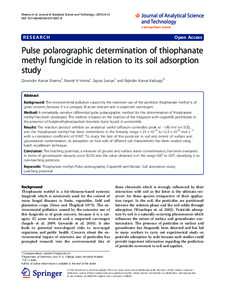<--- Back to Details
| First Page | Document Content | |
|---|---|---|
 Materials science Adsorption Catalysis Colloidal chemistry Reference electrode Soil Perchlorate Acetonitrile Cation-exchange capacity Chemistry Physical chemistry Surface chemistry |
Add to Reading List |
| First Page | Document Content | |
|---|---|---|
 Materials science Adsorption Catalysis Colloidal chemistry Reference electrode Soil Perchlorate Acetonitrile Cation-exchange capacity Chemistry Physical chemistry Surface chemistry |
Add to Reading List |